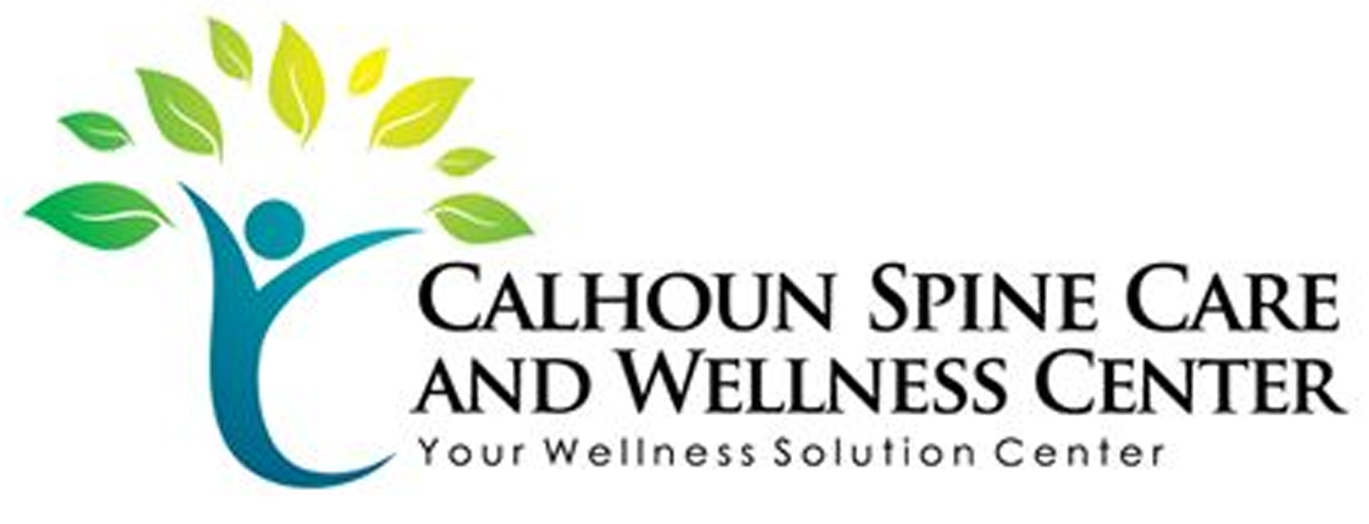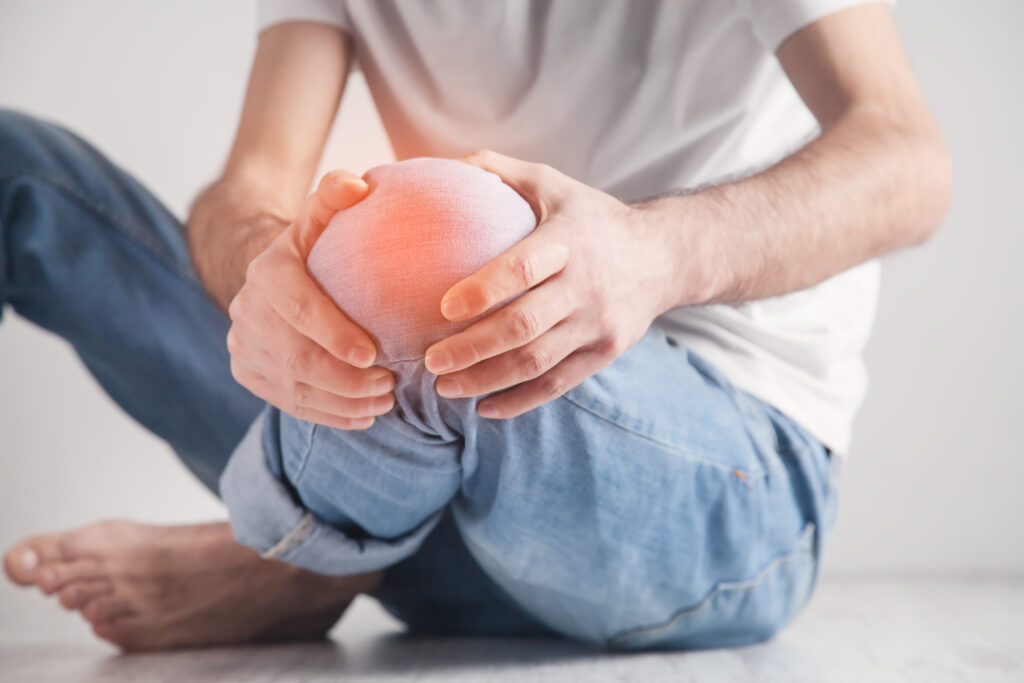If you're dealing with back pain in Calhoun, you're not alone, and there are various relief techniques available to help you regain comfort and mobility. From targeted physical therapy exercises to the benefits of chiropractic care, options abound that can fit your lifestyle. You might also find that incorporating mindfulness practices and ergonomic adjustments at work can make a significant difference. However, it's crucial to understand the underlying causes of your pain before choosing the right approach. What if the solution lies in a combination of these methods?
Understanding Back Pain Causes
Back pain can stem from various causes, and understanding these factors is crucial for effective relief. You might experience back pain due to muscle or ligament strain, often resulting from heavy lifting, awkward movements, or overuse.
If you've been sitting for long periods without proper support, you could also be straining your back, leading to discomfort.
Another common cause is injury or trauma, like a fall or accident. These incidents can result in herniated discs or fractures, which can greatly impact your mobility.
If you're an athlete or someone who engages in physical activities, repetitive motions can contribute to back pain as well. It's important to pay attention to how your body feels during these activities.
Medical conditions can also play a role. You might've underlying issues such as arthritis, scoliosis, or degenerative disc disease, which can lead to chronic pain.
Infections or tumors, though less common, are serious conditions that shouldn't be overlooked.
Lifestyle factors can exacerbate back pain too. Being overweight puts extra strain on your back, while a lack of exercise can weaken your muscles and lead to further discomfort.
Stress can lead to muscle tension, making matters worse.
Identifying the root cause of your back pain is essential to finding the right relief techniques. By understanding what's behind your discomfort, you can take proactive steps toward alleviating it and improving your quality of life.
Physical Therapy Options
Physical therapy offers a range of effective options to help you manage and alleviate back pain. When you visit a physical therapist, they'll assess your specific situation and tailor a program just for you. This personalized approach is essential in addressing the underlying issues contributing to your discomfort.
One common technique you might encounter is manual therapy. This hands-on method includes stretches and manipulations that help improve mobility and reduce pain. Your therapist may also introduce exercises that strengthen your core muscles, which play a vital role in supporting your spine.
Another option is heat and cold therapy. Applying heat can increase blood flow and relax tight muscles, while cold therapy can reduce inflammation and numb sharp pain. Your therapist will guide you on how to use these treatments effectively in your routine.
You may also learn about posture correction and body mechanics. Understanding how to sit, stand, and lift properly can prevent further strain on your back. Your therapist will provide you with tips and exercises to reinforce these habits.
Aquatic therapy is another great choice, especially if you find traditional exercises challenging. Water provides resistance while supporting your body, making movements easier and less painful.
Finally, your therapist might incorporate modalities like electrical stimulation or ultrasound to further aid your recovery.
Benefits of Chiropractic Care
Chiropractic care offers effective pain relief techniques that can help you manage your back pain more effectively.
You'll experience improved mobility as adjustments work to restore your body's natural alignment.
Plus, with personalized treatment plans, your chiropractor can address your unique needs and goals for lasting results.
Pain Relief Techniques
When you're dealing with back pain, exploring various pain relief techniques can make a significant difference in your daily life. One effective method is chiropractic care, which focuses on aligning your spine to relieve pressure and improve overall function.
Here are some pain relief techniques you might consider:
- Manual Adjustments: These adjustments help realign your spine, reducing pain and improving mobility.
- Heat and Cold Therapy: Applying heat can relax tense muscles, while cold therapy can reduce inflammation and numb sharp pain.
- Massage Therapy: A skilled massage therapist can target specific areas of tension, promoting relaxation and improving blood flow to the affected region.
- Stretching and Strengthening Exercises: Engaging in gentle stretches and strengthening exercises can help support your back and prevent future pain.
Improved Mobility Benefits
Experiencing improved mobility can be one of the most rewarding outcomes of chiropractic care. When your spine is properly aligned, it reduces tension in your muscles and joints, allowing you to move more freely. You might notice that everyday activities, like bending, twisting, or even walking, become easier and less painful.
As your mobility increases, you'll likely find that your overall quality of life improves as well. You'll regain the ability to participate in hobbies and activities you once enjoyed but may have shied away from due to pain or stiffness. Whether it's playing with your kids, exercising, or simply getting through your daily routine, enhanced mobility can make a significant difference.
Moreover, improved mobility often leads to a more active lifestyle. With chiropractic care, you can build strength and flexibility, which further supports your body's natural movement patterns.
You'll feel more energized, confident, and capable of tackling challenges. This newfound freedom of movement can also have positive effects on your mental well-being, reducing stress and boosting your mood. Embracing chiropractic care could be your key to releasing a more mobile and fulfilling life.
Personalized Treatment Plans
Personalized treatment plans are a cornerstone of effective chiropractic care, ensuring that your specific needs and goals are addressed.
Rather than taking a one-size-fits-all approach, chiropractors evaluate your unique situation, tailoring their strategies to help you achieve ideal health. This targeted care can lead to significant improvements in your well-being.
Here are some benefits of personalized treatment plans:
- Targeted Solutions: Chiropractors focus on your specific pain areas, leading to more effective treatments.
- Enhanced Recovery: Customized plans can accelerate your healing process by addressing the root cause of your pain.
- Ongoing Assessment: Regular evaluations allow your chiropractor to adjust your plan as needed, ensuring you stay on track.
- Holistic Approach: These plans often incorporate lifestyle changes, exercise, and nutrition, promoting overall health beyond just back pain relief.
At-Home Exercise Routines
While living with back pain can be challenging, incorporating at-home exercise routines into your daily life can greatly alleviate discomfort and improve mobility. Simple exercises can strengthen your core, enhance flexibility, and promote better posture, all of which are essential for back health.
Start with gentle stretches like the cat-cow pose. This yoga move helps to mobilize your spine and relieve tension. Perform the stretch for 5-10 repetitions, focusing on your breathing to maximize relaxation.
Next, try the bridge exercise. Lie on your back with your knees bent and feet flat on the floor. Lift your hips towards the ceiling, hold for a few seconds, then lower back down. Repeat this 10-15 times to engage your glutes and lower back muscles.
Mindfulness and Relaxation Techniques
When it comes to managing back pain, mindfulness and relaxation techniques can make a significant difference.
You can explore deep breathing exercises, guided meditation practices, and progressive muscle relaxation to ease tension and promote healing.
Deep Breathing Exercises
Deep breathing exercises can be a game-changer for managing back pain, as they promote relaxation and mindfulness. By focusing on your breath, you can ease tension in your body and reduce stress, which is often a contributing factor to pain.
Here's how to get started:
- Find a Comfortable Position: Sit or lie down in a quiet space where you won't be disturbed. Close your eyes if it helps you focus.
- Inhale Deeply: Take a slow, deep breath in through your nose, filling your lungs completely. Count to four as you breathe in.
- Hold Your Breath: Pause for a moment at the top of your inhalation, holding your breath for a count of four. This helps increase oxygen flow.
- Exhale Slowly: Release your breath gently through your mouth, counting to six as you do so. Feel the tension leaving your body with each exhale.
Practicing these deep breathing exercises regularly can enhance your overall well-being and provide relief from discomfort.
Guided Meditation Practices
After incorporating deep breathing exercises into your routine, exploring guided meditation can further enhance your relaxation and pain management journey. Guided meditation helps you focus your mind and release tension, which is especially beneficial for alleviating back pain.
You can find various guided meditation sessions online, tailored for pain relief and mindfulness. These sessions often use soothing music and calming voices to lead you through visualizations, helping you create a mental escape from discomfort.
By regularly engaging in these practices, you can train your mind to respond to pain with relaxation instead of stress.
To get started, find a quiet, comfortable space where you won't be disturbed. Settle into a position that feels good for your back, whether sitting or lying down. Then, choose a guided meditation that resonates with you.
Allow yourself to be fully present, focusing on the instructions and letting go of any distracting thoughts.
With consistent practice, you'll likely notice a positive shift in how you perceive pain and stress. Incorporating guided meditation into your routine not only promotes relaxation but also empowers you to take control of your back pain management.
Progressive Muscle Relaxation
Progressive Muscle Relaxation (PMR) is a powerful technique that can greatly reduce back pain by promoting deep relaxation throughout your body.
This method involves systematically tensing and relaxing different muscle groups, helping you become more aware of where you hold tension. By practicing PMR, you can alleviate stress and muscle tightness that often contribute to back pain.
Here's how to get started with PMR:
- Find a Quiet Space: Choose a comfortable, quiet location where you won't be disturbed.
- Get Comfortable: Sit or lie down in a relaxed position. Close your eyes if it feels comfortable.
- Tense and Release: Start with your feet. Inhale and tense the muscles for about five seconds, then exhale and relax them.
- Move Upward: Gradually work your way up through your body, repeating the tensing and relaxing process for each muscle group, including your legs, abdomen, back, arms, and face.
Hot and Cold Therapy
When you're dealing with back pain, hot and cold therapy can be incredibly effective in providing relief. Using these methods can help you manage discomfort and promote healing in your back.
Hot therapy, such as heating pads or warm baths, works by increasing blood flow to the affected area. This increase in circulation can help relax tight muscles and alleviate stiffness. You can apply heat for about 15 to 20 minutes at a time. Just be careful not to use it for too long to avoid burns.
If you have inflammation or swelling, it's best to wait until that subsides before using heat.
On the other hand, cold therapy, like ice packs or cold compresses, is great for reducing inflammation and numbing sharp pain. Applying cold can help constrict blood vessels, which decreases swelling and can provide immediate relief. Aim for 15 to 20 minutes of cold therapy, allowing your skin to warm back up between sessions.
You can alternate between hot and cold therapy to maximize benefits. For example, start with cold therapy to reduce swelling, then switch to heat to relax muscles afterward.
Listen to your body—if one method feels more soothing than the other, go with that.
Incorporating hot and cold therapy into your routine can be a simple yet effective way to ease your back pain. Just remember to use these techniques safely, and don't hesitate to consult a healthcare professional if your pain persists.
Ergonomic Workstation Adjustments
Adjusting your workstation can greatly reduce back pain.
Start by optimizing your chair height so your feet rest flat on the ground, and your knees are at hip level.
Next, position your monitor at eye level to prevent slouching and strain on your neck.
Chair Height Optimization
Finding the right chair height can make all the difference in your comfort and productivity at work.
When your chair is at the proper height, you support your back, enhance circulation, and reduce strain on your muscles.
Here are four key steps to optimize your chair height:
- Feet Flat on the Ground: Confirm your feet rest flat on the floor or a footrest. This position promotes stability and reduces pressure on your legs.
- Knee Angle: Your knees should be at a 90-degree angle or slightly lower than your hips. This alignment encourages better posture and minimizes lower back discomfort.
- Back Support: Adjust your chair so that your lower back is well-supported. If your chair lacks lumbar support, consider using a cushion for added comfort.
- Desk Height Consideration: Verify your chair height allows your arms to sit comfortably at desk level. Your elbows should be at a 90-degree angle when typing, preventing strain on your shoulders.
Monitor Positioning Guidelines
Getting your monitor positioned correctly is essential for reducing eye strain and promoting good posture at your workstation. Start by placing your monitor at eye level, so your gaze naturally falls on the top third of the screen. This helps maintain a neutral neck position, reducing strain on your neck and back.
Position the monitor about an arm's length away, roughly 20 to 30 inches. This distance minimizes eye strain while allowing you to see the screen clearly. If you wear glasses, consider adjusting the distance based on your prescription.
Make certain to tilt the screen slightly back, around 10 to 20 degrees, to prevent glare and guarantee comfort. If you find yourself frequently squinting or leaning forward, it may indicate that your monitor's position needs further adjustment.
Lastly, consider using a monitor stand if your screen is too low. This can elevate the monitor to the ideal height.
Remember to keep your keyboard and mouse at the same level as your elbows, allowing your arms to rest comfortably at your sides. By following these guidelines, you can create an ergonomic workstation that reduces discomfort and enhances productivity.
Lifestyle Changes for Prevention
Making small yet impactful lifestyle changes can considerably reduce the risk of back pain. You don't have to make drastic adjustments; a few simple tweaks in your daily routine can lead to significant improvements.
Start by focusing on your posture. Whether you're sitting, standing, or lifting, maintaining proper alignment can help prevent unnecessary strain on your back.
Here are four essential lifestyle changes to take into account:
- Stay Active: Engage in regular physical activity. Aim for at least 30 minutes of moderate exercise most days of the week. Activities like walking, swimming, or yoga can strengthen your back and core muscles.
- Watch Your Weight: Keeping a healthy weight reduces the stress on your back. If you're carrying extra pounds, think about a balanced diet and regular exercise to shed those pounds and ease the strain on your spine.
- Use Proper Lifting Techniques: When lifting heavy objects, bend your knees and keep the load close to your body. Avoid twisting your back while lifting, as this can lead to injury.
- Create an Ergonomic Workspace: If you work at a desk, invest in a good chair that supports your lower back. Position your screen at eye level and keep your feet flat on the floor to promote proper posture.
Alternative Therapies
When it comes to managing back pain, alternative therapies can offer effective relief alongside conventional treatments. You might find that exploring these options can enhance your overall well-being and help you regain mobility.
One popular alternative therapy is acupuncture. This ancient Chinese practice involves inserting thin needles into specific points on your body to alleviate pain and promote healing. Many people report significant improvements in their back pain after just a few sessions, making it worth considering.
Chiropractic care is another effective option. Chiropractors use hands-on spinal manipulation to align your musculoskeletal structure, which can relieve pain and improve functionality. Regular visits may help prevent future discomfort, giving you more freedom to enjoy daily activities.
You might also explore massage therapy. Therapeutic massage can reduce muscle tension, improve circulation, and enhance relaxation. Whether you prefer deep tissue or Swedish massage, finding a skilled therapist can make a notable difference in your back pain relief.
Yoga and Pilates are excellent alternatives that focus on strengthening your core and enhancing flexibility. These practices not only improve your posture but also teach you ways to manage stress and tension, which can contribute to back pain.
Lastly, considering herbal remedies and supplements might offer additional support. Always consult a healthcare professional before starting any new treatment.
When to Seek Medical Help
While alternative therapies can provide significant relief from back pain, there are times when seeking medical help becomes necessary.
It's important to listen to your body and recognize when your back pain might indicate a more serious issue. If you experience any of the following symptoms, don't hesitate to consult a healthcare professional:
- Persistent Pain: If your back pain lasts longer than a few weeks or worsens over time, it's time to seek medical advice. Chronic pain can be a sign of an underlying condition.
- Numbness or Tingling: If you notice numbness, tingling, or weakness in your legs or arms, it may indicate nerve involvement. Prompt evaluation is vital to prevent further complications.
- Loss of Bladder or Bowel Control: This symptom can signal a severe condition known as cauda equina syndrome, which requires immediate medical attention. Don't wait if you experience this.
- Fever or Unexplained Weight Loss: If you have back pain accompanied by fever or significant weight loss, it may indicate an infection or other serious health issue. Seek medical help promptly.
Recognizing these warning signs can make a significant difference in your health and recovery.
Conclusion
In Calhoun, finding relief from back pain is within your reach. By exploring physical therapy, chiropractic care, mindfulness practices, and ergonomic adjustments, you can greatly improve your well-being. Don't forget to incorporate at-home exercises and lifestyle changes to prevent future discomfort. If your pain persists or worsens, it's essential to seek medical help. Remember, taking proactive steps today can lead to a healthier, pain-free tomorrow. Your back deserves the best care possible!



